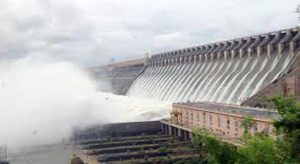Water Circularity : Study

A study, “Waste to Worth: Managing India’s Urban Water Crisis Through Wastewater Reuse,” published by the Centre for Science and Environment (CSE), highlights the need for water circularity by reusing treated wastewater as a solution to both water scarcity and environmental degradation. Water circularity is the practice of recycling, reusing, and recovering resources within the water treatment cycle to maximize value for people, nature, and businesses. It minimizes waste, reduces pollution, and regenerates natural systems.
Key Findings of the Study on Wastewater Reuse:
- India’s Growing Water Scarcity: India ranks 132nd globally in per capita water availability (India-WRIS), with freshwater resources declining by 73% from 5,200 cubic meters (m³) in 1951.
- The Central Water Commission estimates per capita availability at 1,486 m³ in 2021, projected to drop to 1,367 m³ by 2031.
- India is already a water-stressed nation (below 1,700 m³ per capita) and risks becoming water-scarce (below 1,000 m³ per capita) without urgent action.
- India occupies 2% of the Earth’s landmass but has only 4% of global freshwater resources, while supporting 18% of the world’s population and 15% of its livestock, putting immense pressure on its water supply.
- Wastewater Generation Crisis: In 2020-21, Urban India generated 72,368 million litres per day (MLD) of sewage, but only 44% (31,841 MLD) had treatment capacity, with an operational capacity of 26,869 MLD.
- As a result, only 28% (20,236 MLD) was treated, while 72% remained untreated, polluting water bodies and land.
- Wastewater generation is expected to increase by 75–80% over the next 25 years, reaching 48 BCM annually by 2050, which is 3.5 times the current treatment capacity.
- Wastewater is an untapped resource that can supplement fresh water supply while reducing environmental pollution.
- Water Governance Challenges: Indian cities heavily rely on distant rivers for water (Bengaluru (Cauvery), and Hyderabad (Krishna, Godavari)).
- This dependence increases costs, and leads to shortages and unequal access, especially in urban peripheries and informal settlements.




